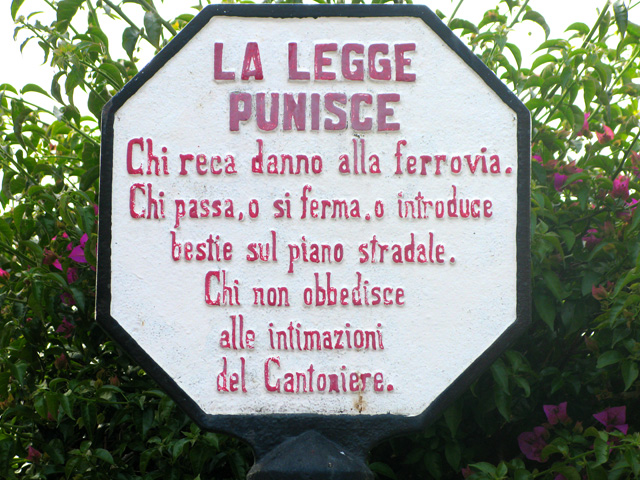
The Ferrovia Circumetnea train pulls into the station at Catania Borgo and a surprising number of people spill out, given that it’s only 9.30 in the morning and, depending on where they’ve come from, they could have travelled anything up to three hours already. We tourists on the platform wait for them to get clear and then climb aboard. The carriages are narrow and the seats faux leather bench style, rather than canvas-covered individual ones as is the modern way. Kate and I find a couple of spaces opposite each other and squeeze in like sardines with the rest of the travellers.
I look around me at the other people on the train. The woman next to me is carrying a laptop case and is dressed in a smart suit. When the conductor arrives to check tickets, she produces a laminated season pass – as do a number of others. Sure, there are tourists on here, with cameras around their necks and paper tickets marked either ’60’ or ‘110’, according to how many kilometres they’re travelling, but the ratio of visitors to locals is more balanced than I’d expected. I hand over my ‘110’ ticket and smile at the conductor. He looks at me with detachment, remembering my face for when he next passes through to check new arrivals. I lean back in my seat and stare out of the window of the train, searching for sightings of Etna.
At first the view is mainly of the scrubby, rubbish filled outskirts of Catania, but every so often I catch a teasing glimpse of her, smoking away in the distance. She’s still snow capped, even if not as much as a couple of months ago, and, as always, makes me catch my breath with her beauty. The day after Kate and I make this journey she’ll erupt, throwing spectacular fountains of bright lava into the air, but for today she’s snoozing like a sleepy dragon, puffs of smoke coming out of her nose as she breathes.
Her shape changes every time you see her. By the time we reach the suburb of Misterbianco she looks like the kind of volcano that a child would draw, with steep, even sides rising to a flat, smoking summit. A proper cone. Above Misterbianco she changes again, becoming wider and flatter. Here also the black smoke from the Valle di Bove side from where she’ll erupt so spectacularly tomorrow is clearer. We may not see any of the fallout in Catania, but I begin to understand, seeing the colour of the cloud, why towns like Giarre, to the east of her, have been covered in ash for so long.
Behind us a chatty man engages the man opposite him in conversation. “You’re going to Randazzo, are you? How long are you staying there?” The answers come through the fuzzy-edged vocal muffle of someone who was born deaf. The man’s inability to hear doesn’t impede the conversation, though; he’s just as talkative as his opposite neighbour. They babble happily back and forth about railways as we rise out of the city into fields of yellow and white wildflowers, punctuated with red poppies and prickly pears. A small bird flies alongside the train, wings a blur of speed as he bobs up and down, swooping and jibbing in our slipstream. Somehow Etna has disappeared – it doesn’t seem possible that such an enormous smoking lump of rock can disappear, but she manages it. I gaze at pale green and white fields, drinking in the open spaces which are missing from my day-to-day city existence.
As we climb through Paternò Etna takes me by surprise by appearing on our left, rather than our right. Given that the circumetnea route goes in a circle, I’d expected only to see her from one side of the train, but it makes sense that occasionally the track has to switch back to be able to climb higher. Proving the truth of this, when Etna appears back on our right hand side the landscape has become scrubbier with more exposed black rock. Here there are fewer open pastures; they’re replaced by terraces planted with orange groves, the trees interspersed with wild prickly pears and occasional blazes of bright red poppies.
The view disappears at Santa Maria di Licodia as we enter a concrete tunnel. The muddy yellow lighting seems sleazy after the bright, warm sunshine above ground. The yellow and black tiles remind me of the Rome metro and it feels old and smokey, despite the only steam trains along the line now being the ones that are planted on station platforms for us camera-toters to take pictures of. I shiver in the dank, cool underground and realise just how hot the sunshine was outside. When we emerge from the tunnel there’s a virtual wall of sun-bathed prickly pears to replace the actual concrete one, but the air is still cooler than it was; we’re now level with the snowline. We’ve climbed nearly 200m between Paternò and Licodia – and we still have over 500m to go before reaching our highest point, 976m above sea level.
A modern road sign shows a steam train at a level crossing and I smile at the way that the image has persisted as shorthand. The engine roars and the carriage sways from side to side as we climb a steep ascent between terraces of houses. Beside us, kitchen tablecloths patterned with bright, yellow and green and orange citrus fruits and vegetables hang from a balcony, fluttery and pretty against the pink stone of the building. On the other side, fat, shaggy-headed yellow roses climb up a wall, defying the diesel fumes of the trains as they wind themselves round railings and send tendrils arching out over the narrow train track.
In stark contrast to this traditional quaintness, up ahead I notice some new structures, which look like station shelters. Their concrete and perspex walls are clean and untouched; not even the amorous teenage graffiti artists have made it here yet with their confessions of undying love. To bring us back to earth, however, there are piles of rusting old rail stacked beside them – and us, on our little two-carriage, narrow-gauge putt-putt train.
Above Adrano we reach olive groves. Etna bulges fatly ahead of us. From further away the snow at her peak seemed smooth and all-encompassing, but from here you can see the reverse snowball trails of black lavic rock peeking through the white, breaking the surface like the lumps of ice that skitter down a mountain face before an avalanche. This is where the moonscape starts and the cultivation finishes. Olives, figs and wildflowers do grow, but they have to be hardy to get by. The ground looks like it’s made up of dried lumps of clay. It isn’t. It’s rock. Like a giant hand has sieved the soil but, rather than discarding the lumps, has tipped over the sieve and dumped them on top.
A low, one room farm store clings in solitary splendour to its terrace. Its corrugated roof is held down with lumps of basalt placed at strategic points around the edges and there’s the classic battered white Fiat parked outside. I’m reminded of an anecdote I once heard of how mules were killed off by the Bee and the Panda in Italy. Bee being ‘ape’, which is the name both for the insect and the three wheeled farm vehicles, little more than a motorcycle with a cabin and and flat bed trailer attached to them that you see puttering about everywhere in southern Italy, and Panda being Fiat’s version of the VW Beetle: big enough to be able to fit a lot inside, but small enough to be able to cope with driving along narrow farm tracks and mule trails. With insects and bears both able to do the same job as the mule but without its legendary stubbornness, it’s no wonder that the poor old beast of burden found itself superceded.
We pause just outside Bronte for the down train to pass. The other train looks to be full of American tourists: their colourful polo shirts, sun visors and gleaming teeth give them away. A man on our train takes advantage of the stop to hop off and grab some pistacchi from a tree, but comes back with rueful empty hands. “No good.” He shrugs and grins at his companions. It was worth a try. We crawl at a snail’s pace towards the station, creeping through the outskirts of the town. Outside, a shirtless man repairs a roof, watched with an eagle eye by his wife. He’s rosy brown and thin. She’s wrapped in black and holding a mug of something. She leans on the doorframe, watchful and guarded. At the station, a group of teenage girls stands on the platform studying the timetable. The leader gesticulates and animates as she makes her point. I can’t hear the words, but her meaning is clear: No, not this train – we need the one going the *other* way. Her acolytes nod.
Above Bronte even the pistacchio trees peter out. Around us there are only rocks and scrub and Etna’s peak. It’s brief, though – once we’ve passed Roccacalanna, our highest point on the journey, we start to drop again and signs of life return. A blackbird perches on top of a solitary scorched tree in the middle of an expanse of green while three shaggy sheep, coats like riced potatoes, charge through the grass as one, heads down bullishly. Further on, a less skittish herd lies on a thick bed of straw in an Alpine-style latticed wooden shelter. Their guardian, a white dog, lifts his head and watches us pass with unconcerned interest as a black cat runs, ears flattened to its skull, to escape from the noisy rattle of the train. The sheep, meanwhile, seem blissfully unaware of our presence.
There are two art students sitting opposite us. They got on at Bronte, both lugging large black portfolios. One of them – thin and baby-faced – fell asleep almost as soon as he sat down, but the other has been gazing out of the window, watching the scenery pass from behind his shoulder-length hair and thick-rimmed glasses. As we approach Randazzo, where this train will stop and go no further, babyface wakes up and bounces into action, clapping his friend heartily on the knee as if their roles had been reversed and glasses boy was the one who needed to be woken. Glasses boy rolls his eyes and turns back to the window, refusing to move until the train has come to a complete standstill. I follow his lead, gathering up my bag and notebook carefully, checking and rechecking to make sure I haven’t forgotten anything while Kate – who’s also been dozing on and off – hops from foot to foot, eager to get off the train.
After our longer-than-planned stop at Randazzo we climb back on board. It’s the same physical setup as before, but the atmosphere is different. The change started in the station waiting room, when someone produced a pack of Scopa cards and a game started up. A round, partridge-like woman with twinkling eyes and a ready laugh joined in the game with a group of teenagers. When the train arrived she darted around from stranger to stranger: “Is this the Giarre train? Does this one go to Giarre?” Nobody on the platform was quite sure and the guard had disappeared, but in a show of solidarity we all got on the train anyway, looking around the carriage with anticipatory glee – would we end up going the wrong way?
Thankfully no. As the train pulls away from the station the portly, sandy-blonde guard with the sunglasses pushed carelessly yet artfully up onto his forehead passes through the carriage laughing and joking with everyone. “Yes, we’re going to Giarre.” He’s unconcerned with seeing tickets, being far more interested in chatting. The tone has been set for this leg of the journey: from Catania to Randazzo it was business; from Randazzo to Giarre it’s pleasure. Everything about this section is relaxed: from the level crossings (there aren’t any – the train merely whistles to announce its presence as it approaches the narrow, one-track roads which cut across the tracks) to the way that an off-duty guard hops off the train to manually operate the signals before giving us a cheery wave and heading home for the day.
At one point we pass an open field where some kids wave at us, all cheeky, grinning faces and mad, semaphoring arms. Behind them, horses gallop along with the train, trying to match its pace. Mainly, though, the countryside here is green and thick with vines, shot through with the occasional defunct lava flow and every so often spotted with individual houses. Outside one of them, a pair of white geese waddle, pigeon-toed, fat bottoms swaying from side to side as they escape as fast as they can away from the rattling train and towards the safety of their pen.
The train slows and draws to a halt. I look out of the window to see where we are, but there’s no station. Instead, there are steps cut into the hillside, with a little old lady waiting at the bottom, laden with plastic shopping bags. She climbs slowly aboard, her brown, wrinkled-apple face beaming at the conductor, and takes a seat at the front, placing her bags with care on the seat beside her. A middle-aged woman hails her from the back of the carriage. “Buona sera!” She moves down to join the new arrival, sitting on the seat behind her and leaning forward for a chat about their respective days.
Partridge woman is flapping again: “Where are we?” The guard stops next to her. “We’re at Piedi.Monte,” – he enunciates carefully – “and we’re going TO Giarre. Va bene, signora?” He raises his eyebrows at her, shifting the sunglasses which have been resting on top of them ever since we got on the train, and laughs. The man next to partridge woman throws up his hands good-naturedly. “That’s what I told her!” She chuckles and pats his arm. “I know. I just wanted to be sure …”
“NEXT stop, GIARRE. STATE TRAIN to Catania.” The guard goes along the carriage announcing in English then makes a point of turning to partridge woman at the front and telling her as well, in both English and Italian. The whole carriage giggles together. When the train arrives at Giarre we all bundle down the steps and stand on the platform blinking shyly at each other, not sure where we’re supposed to go and not quite having the nerve to ask now that we’ve left the camaraderie of the carriage. Volcanic ash – less ash than millions of tiny chips of pumice – crunches underfoot, inches thick. I put up Kate’s umbrella against the early evening drizzle and we start to walk along the road. A flash of red catches my eye; I see a more informed traveller scooting back across the tracks behind our recently vacated train, which is now pulling away from the platform. We stop and wait for it to go past. As it does so, the driver toots the horn and he and the guard give us a cheery wave. I wave back, grinning. Despite the drizzle, despite our plans having gone awry, despite being covered in a thick layer of grit from the volcano, this has been the most wonderful day.

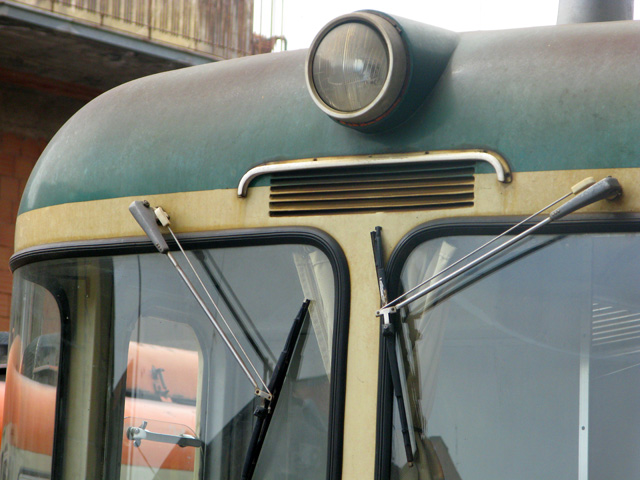
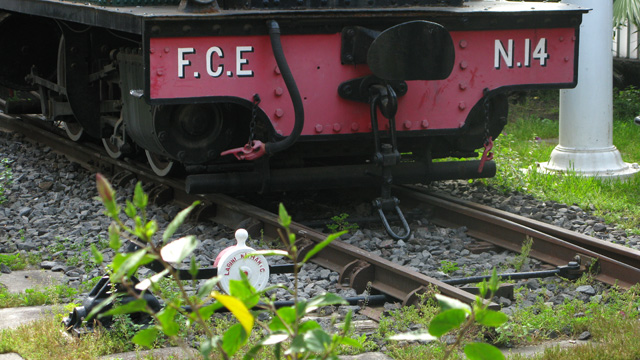
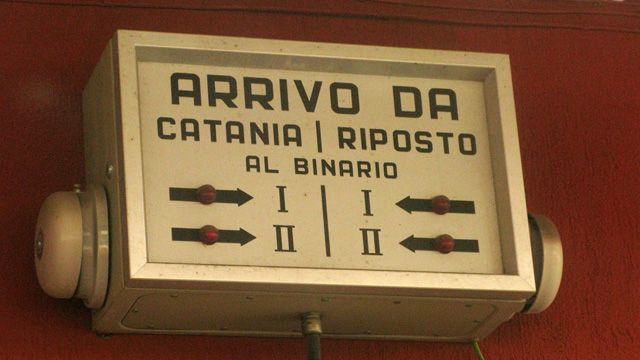
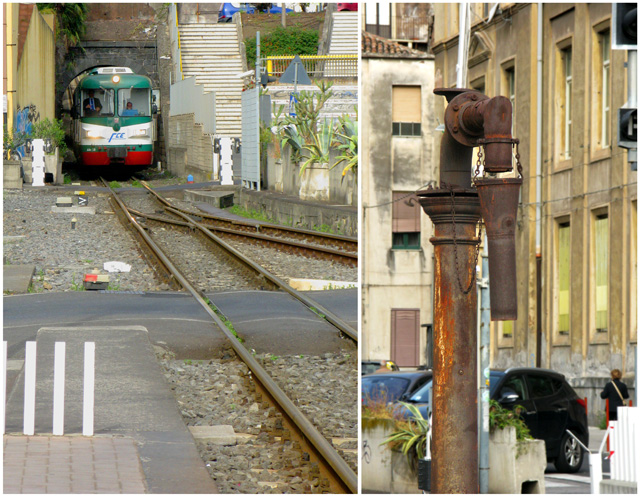
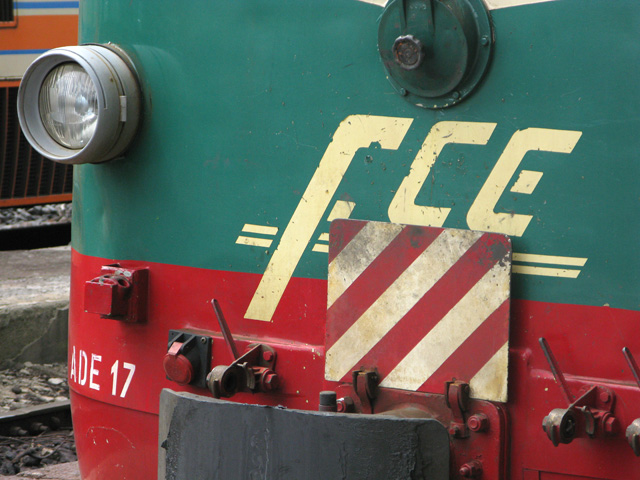
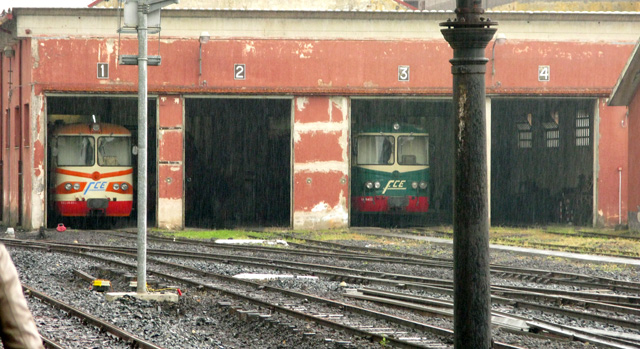
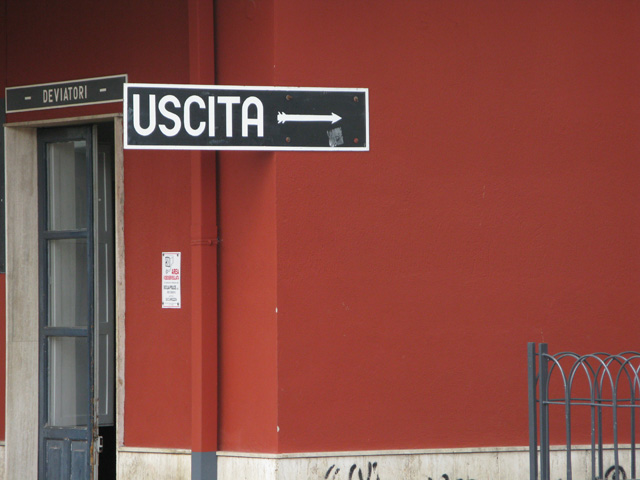






Pingback: How to climb an Italian volcano » Italy Beyond The Obvious